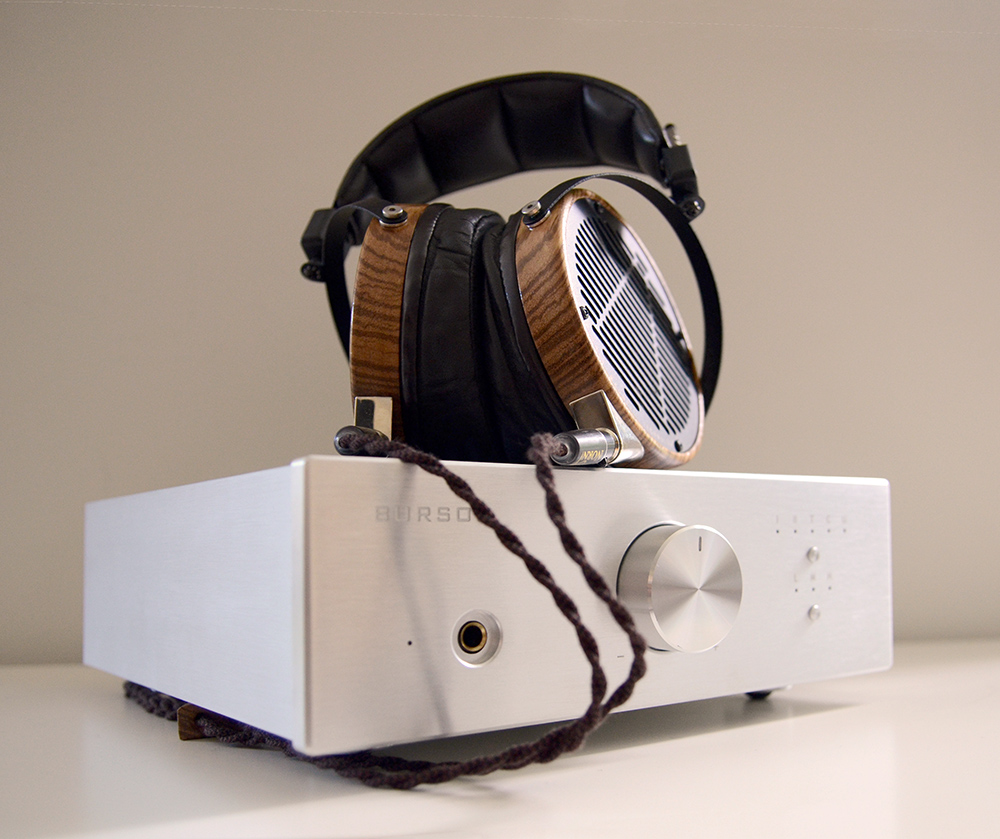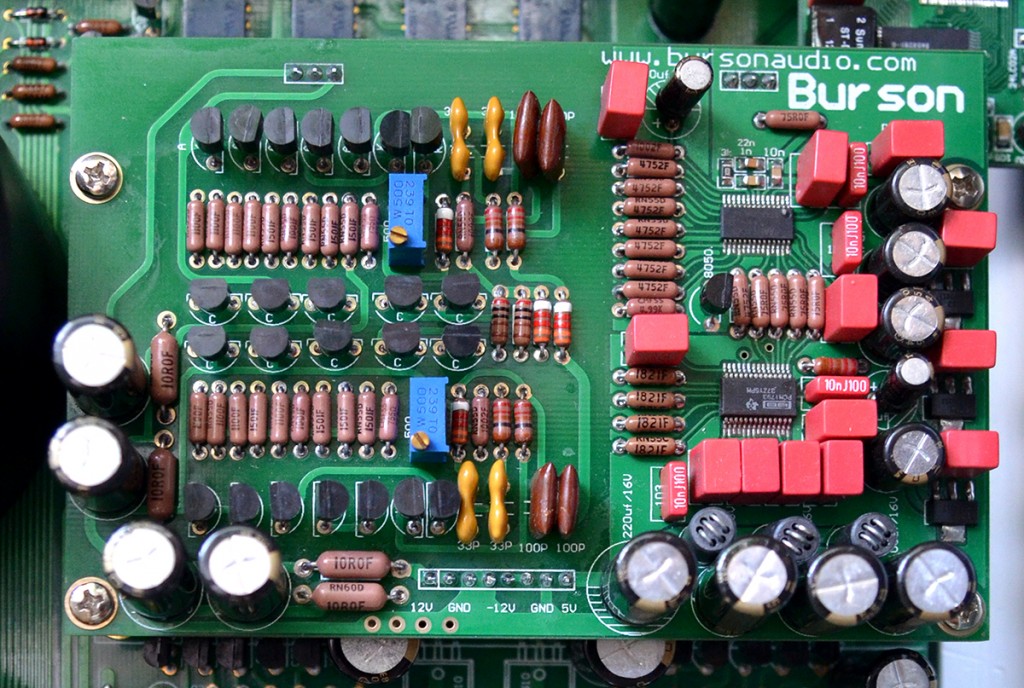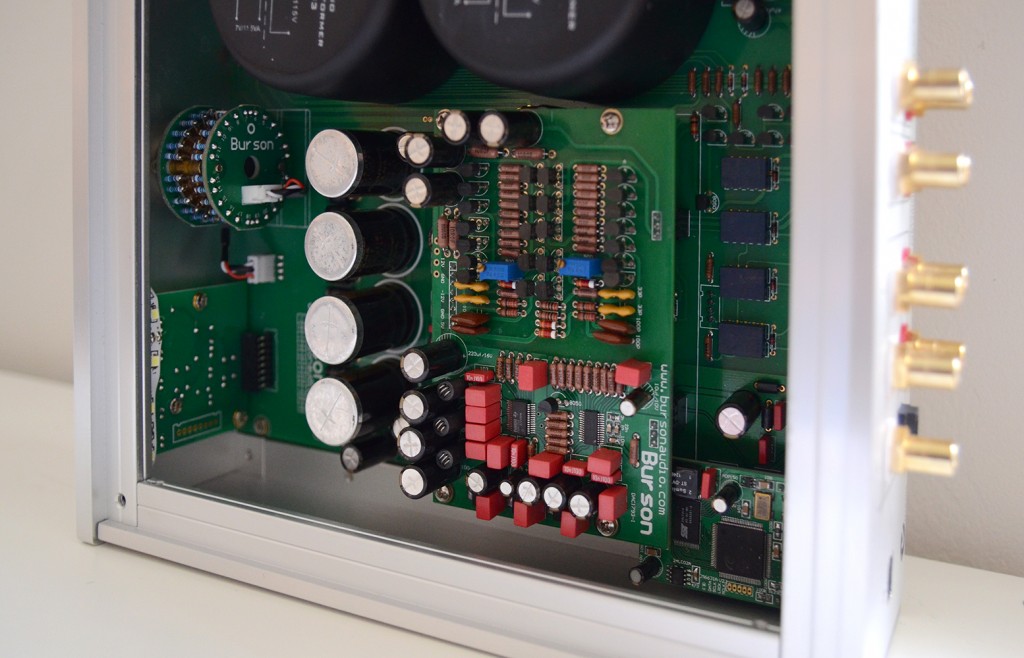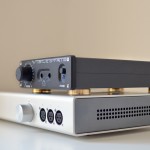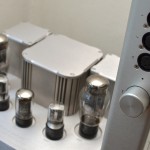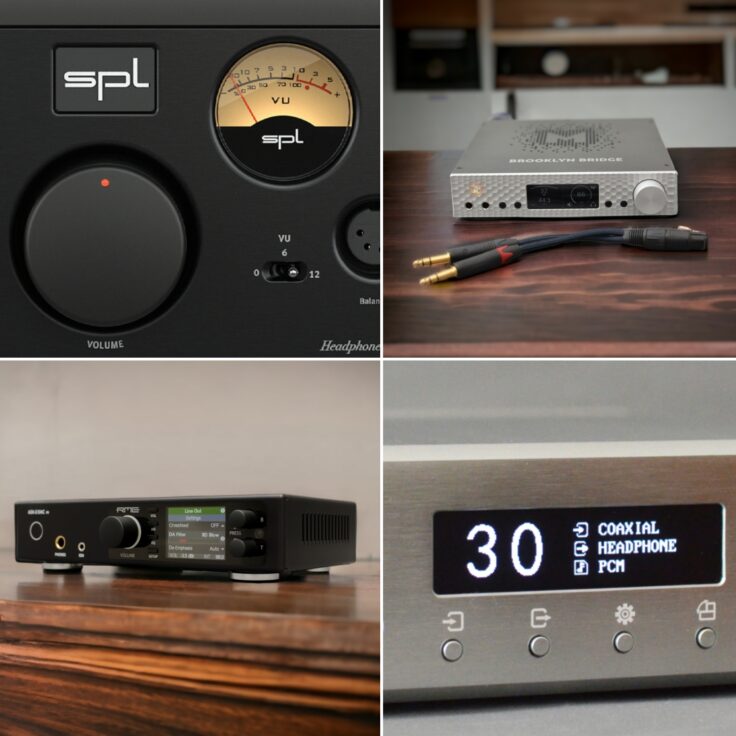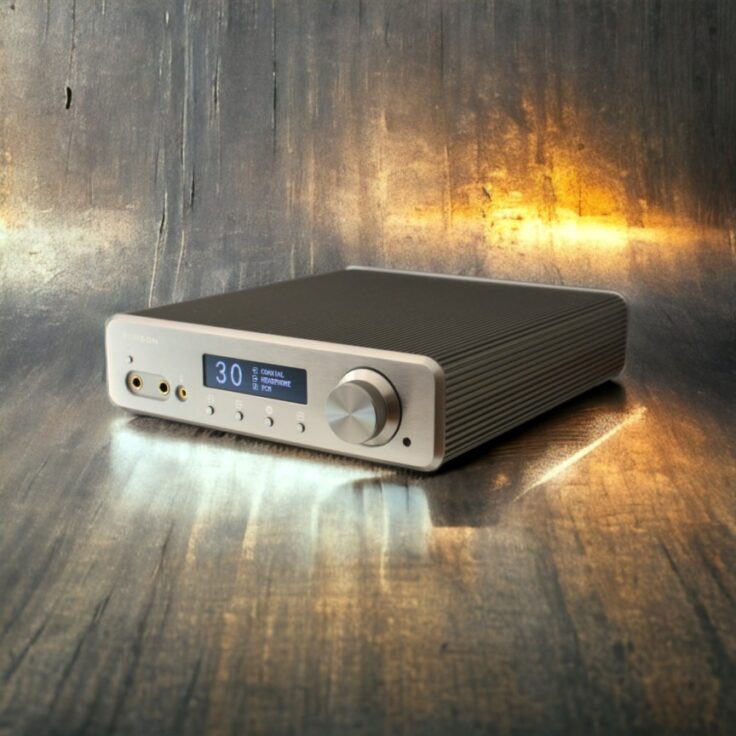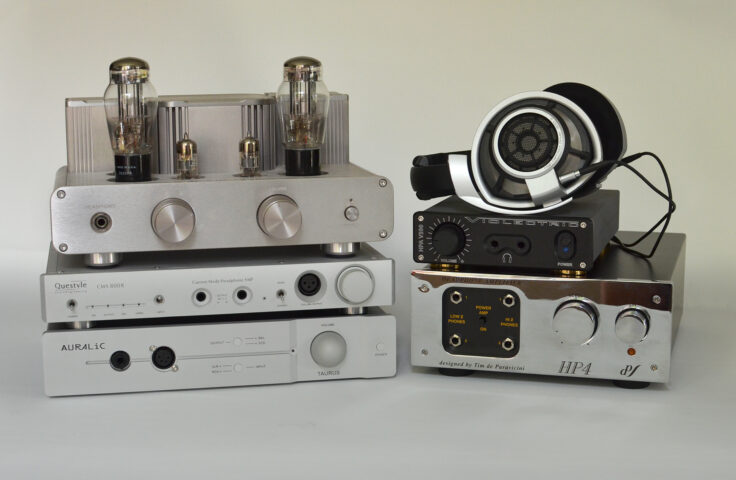Conductor – The DAC
This review is mostly about the amplifier section of the Conductor, which as mentioned is identical to the Burson Soloist amplifier. But since the Conductor is a Soloist with a DAC, reviewing the DAC is as critical as the amplifier. Unfortunately, I didn’t get the time to do a thorough review of the DAC, but I did do a brief investigation. There are currently two DAC-options from Burson, the Burr-Brown PCM1793 and the Sabre ESS9018. My review unit was equipped with the Burr-Brown PCM1793 card. A full DAC review should of course compare the two DAC cards, and various input modes, but this is not that review. Anyhow – this is what I found listening through the Audeze LCD-2 rev.1 headphones and the internal amplifier section of the Conductor:
First, I tested the Conductor’s DAC up against my Squeezebox Touch’s analog output. I found the Condutor to sound more open and resolved. The Touch, though extremely good for its money, is just plainly put flatter sounding. The Conductor is clearly better with my test tunes, whether it is string quartets, electronica or female vocals. The Touch sounds a bit muted in comparison, without the Conductor sounding bright, just clearer and more detailed. Having made it clear that the Conductor betters the Squeezebox Touch, I moved on to the Violectric V800.
This round was more even. I compared the Conductor’s PCM1793-DAC via USB to the V800 via the Squeezebox Touch’s coax. In short, I did find the V800 preferrable, in its smoother, and more subtle ways of presentation, but it was not a clear win, some would surely find it a matter of preference. Though I must say, the ability to be revealing, yet smooth, is a trait I have come to value highly in DACs, and the V800 has this to a higher extent than the Conductor.
On Portishead’s “It could be sweet” the V800 gives me the sense of digging slightly deeper in the bass, and generally it has a smoother, more fluid presentation. However, the Conductor DAC is crisper (in a nice way), and can definitely feel more spacious. Some might like that trait very much. Playing Vivaldi’s “Winter” (Concerto Nr.4 In F Minor: Winter – III Allegro) the Conductor shows some more bite in the upper mids, making the strings sound more up front, a bit more aggressive, which I enjoyed. On Solveig Slettahjell’s “Never Forget The Good Ones” (female jazz vocals) the Burson DAC again is crisper, slightly drier – the V800 sounds smoother.
In the end, both have plenty of details and good imaging, but they are different flavors. I feel like that Conductor DAC is of the kind that is more impressive at first listen with it’s sparkling nature, but the V800’s more neutral and toned down, yet highly transparent in a more polite way. Even though I prefer the V800, I could live quite happily with the Conductors built in Burr-Brown PCM1793 DAC, it is way better than many separate DAC’s out there. Given that you have to pay quite a lot more for the Conductor than for the Soloist, you should also expect the DAC-section to be quite good. Is it a total bargain? Maybe not. But it is good.
Continue reading on the next page (click below)……


